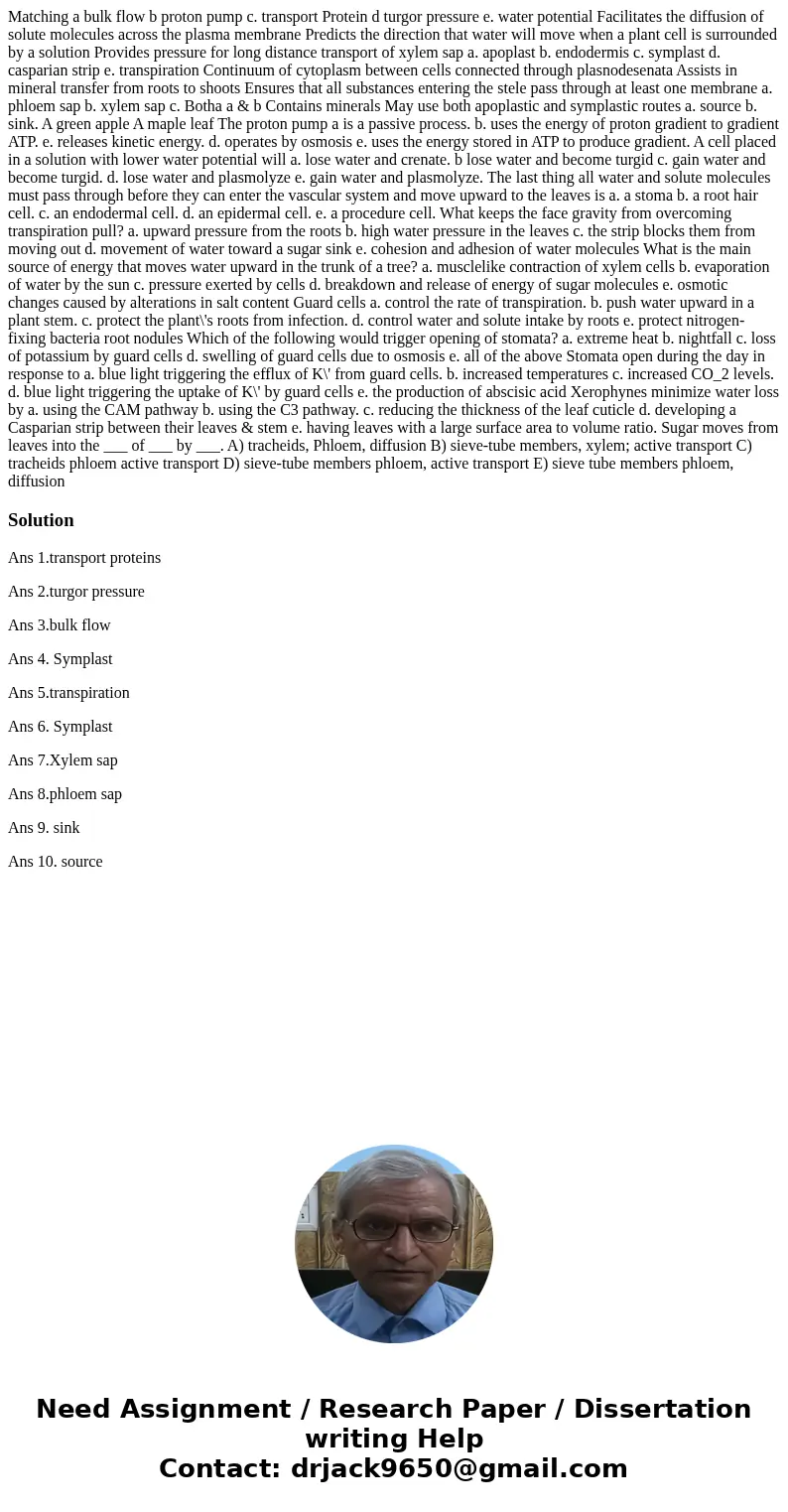Matching a bulk flow b proton pump c transport Protein d tur
Matching a bulk flow b proton pump c. transport Protein d turgor pressure e. water potential Facilitates the diffusion of solute molecules across the plasma membrane Predicts the direction that water will move when a plant cell is surrounded by a solution Provides pressure for long distance transport of xylem sap a. apoplast b. endodermis c. symplast d. casparian strip e. transpiration Continuum of cytoplasm between cells connected through plasnodesenata Assists in mineral transfer from roots to shoots Ensures that all substances entering the stele pass through at least one membrane a. phloem sap b. xylem sap c. Botha a & b Contains minerals May use both apoplastic and symplastic routes a. source b. sink. A green apple A maple leaf The proton pump a is a passive process. b. uses the energy of proton gradient to gradient ATP. e. releases kinetic energy. d. operates by osmosis e. uses the energy stored in ATP to produce gradient. A cell placed in a solution with lower water potential will a. lose water and crenate. b lose water and become turgid c. gain water and become turgid. d. lose water and plasmolyze e. gain water and plasmolyze. The last thing all water and solute molecules must pass through before they can enter the vascular system and move upward to the leaves is a. a stoma b. a root hair cell. c. an endodermal cell. d. an epidermal cell. e. a procedure cell. What keeps the face gravity from overcoming transpiration pull? a. upward pressure from the roots b. high water pressure in the leaves c. the strip blocks them from moving out d. movement of water toward a sugar sink e. cohesion and adhesion of water molecules What is the main source of energy that moves water upward in the trunk of a tree? a. musclelike contraction of xylem cells b. evaporation of water by the sun c. pressure exerted by cells d. breakdown and release of energy of sugar molecules e. osmotic changes caused by alterations in salt content Guard cells a. control the rate of transpiration. b. push water upward in a plant stem. c. protect the plant\'s roots from infection. d. control water and solute intake by roots e. protect nitrogen-fixing bacteria root nodules Which of the following would trigger opening of stomata? a. extreme heat b. nightfall c. loss of potassium by guard cells d. swelling of guard cells due to osmosis e. all of the above Stomata open during the day in response to a. blue light triggering the efflux of K\' from guard cells. b. increased temperatures c. increased CO_2 levels. d. blue light triggering the uptake of K\' by guard cells e. the production of abscisic acid Xerophynes minimize water loss by a. using the CAM pathway b. using the C3 pathway. c. reducing the thickness of the leaf cuticle d. developing a Casparian strip between their leaves & stem e. having leaves with a large surface area to volume ratio. Sugar moves from leaves into the ___ of ___ by ___. A) tracheids, Phloem, diffusion B) sieve-tube members, xylem; active transport C) tracheids phloem active transport D) sieve-tube members phloem, active transport E) sieve tube members phloem, diffusion
Solution
Ans 1.transport proteins
Ans 2.turgor pressure
Ans 3.bulk flow
Ans 4. Symplast
Ans 5.transpiration
Ans 6. Symplast
Ans 7.Xylem sap
Ans 8.phloem sap
Ans 9. sink
Ans 10. source

 Homework Sourse
Homework Sourse